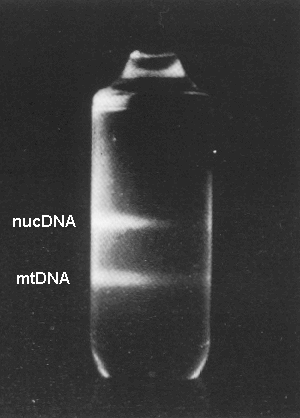I love color in the lab. It is such a satisfying feeling to know that the small quantity of liquid you just added to a tube really got in there! When isotopes began to be made with a touch of bright pink, it made my day :-) But it really has been a journey.
I'm old enough to have actually extracted DNA from a cesium chloride column by sucking the thin pink band out of the middle of the tube! Kits are for newbies. You aren't really a molecular biologist until you've stuck your own finger with a needle that just passed though cesium chloride and ethidium bromine-coated DNA. Ah, the good old days:
 |
SM Carr & OM Griffiths.1987. Biochem Genet 25:385-390 |
Today's kids take for granted all kinds of color indicators. They've been spoiled thanks to the array of colorful proteins made possible by "borrowing" from jellyfish DNA:
 |
| Aequorea victoria jellyfish. Image credit:Steven Haddock. |
As fun as they are, colors in science aren't just a visual guilty pleasure, they are a confirmation that something has worked. Something has changed from its original, boring, non-colored state. That we have altered nature and made her our bitch. So I am thrilled by this new development from a group at Stanford.
Bonnet, a postdoctoral scholar at Stanford University, worked with graduate student Pakpoom Subsoontorn and assistant professor Drew Endy, PhD, to reapply natural enzymes adapted from bacteria to flip specific sequences of DNA back and forth at will. All three scientists work in the Department of Bioengineering, a joint effort of the School of Engineeringand the School of Medicine.
In practical terms, they have devised the genetic equivalent of a binary digit — a “bit” in data parlance. “Essentially, if the DNA section points in one direction, it’s a zero. If it points the other way, it’s a one,” Subsoontorn explained.
Binary Code, e coli style:









